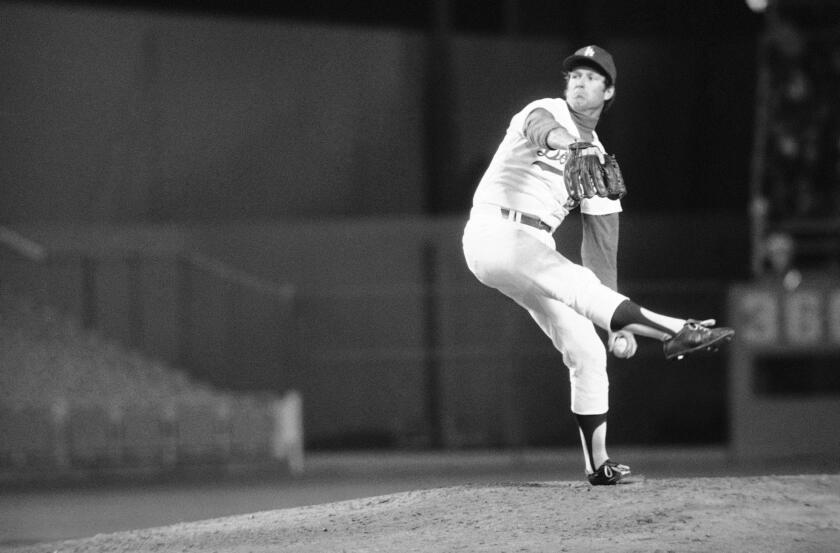Baseball has always been a game of resilience and reinvention, and few players embody these qualities better than Tommy John. A durable left-handed pitcher whose career spanned an incredible 26 seasons from 1963 to 1989, John’s name is synonymous with perseverance—not only for his longevity and skill on the mound but for a revolutionary surgery that changed the face of sports medicine. Despite his profound impact on the game, John’s long-awaited call to the Baseball Hall of Fame in Cooperstown remains elusive, even as his contributions to baseball become increasingly undeniable.
The Career: Consistency Over Flash
Tommy John’s career is one defined by consistency, adaptability, and hard work. Over 26 seasons, John amassed a staggering 288 wins, a number that places him in the upper echelon of pitchers in Major League Baseball history. His 700 career starts rank eighth all-time, and his 46 shutouts showcase his ability to dominate opposing lineups when it mattered most. Yet, despite these remarkable numbers, John was never the flashiest pitcher of his era.
John wasn’t a strikeout artist like Nolan Ryan or a power pitcher like Bob Gibson. Instead, he relied on impeccable control, a deceptive sinker, and an ability to outthink hitters. His style of pitching—predicated on inducing weak contact and minimizing mistakes—earned him four All-Star appearances and significant accolades from teammates and opponents alike. His longevity and effectiveness in an era that lacked the scientific training regimens of today make his career even more extraordinary.
The Defining Moment: Tommy John Surgery
While his on-field accomplishments are noteworthy, Tommy John’s name is forever linked to the groundbreaking surgery that saved his career—and countless others. In 1974, at the age of 31, John tore the ulnar collateral ligament (UCL) in his pitching arm, an injury that had been a death sentence for pitchers until that point. Rather than accept the end of his career, John teamed up with Dr. Frank Jobe, who devised an experimental surgical procedure to reconstruct the ligament using a tendon from another part of the body.
The surgery, now known as Tommy John surgery, was a gamble with no guarantees of success. However, John not only recovered but went on to pitch for another 14 seasons, winning 164 more games after the procedure. The success of the surgery revolutionized sports medicine and extended the careers of thousands of pitchers across multiple sports. Today, Tommy John surgery is so commonplace that it’s easy to forget how groundbreaking it was in 1974. It’s no exaggeration to say that this medical advancement transformed the sport of baseball and continues to do so.
The Hall of Fame Debate: Why Not Yet?
Despite his statistical achievements and medical legacy, Tommy John has yet to receive the call from Cooperstown. His candidacy for the Hall of Fame has been debated for decades, with arguments both for and against his inclusion.
On the one hand, John’s career win total of 288 is tantalizingly close to the 300-win benchmark traditionally seen as a ticket to Cooperstown. However, critics argue that his lack of individual awards, such as Cy Youngs or MVPs, weakens his case. Others point to his relatively low strikeout totals, arguing that his statistical dominance doesn’t match that of other Hall of Fame pitchers.
Yet these arguments fail to account for the broader context of John’s career. His longevity and consistency in an era when pitchers were less specialized and faced grueling workloads are hallmarks of greatness. Additionally, his role as a pioneer in sports medicine adds a layer of historical significance that few players can claim. The Hall of Fame isn’t just about numbers; it’s about a player’s impact on the game, and in this respect, Tommy John’s contributions are unparalleled.
Changing Perspectives on Hall of Fame Metrics
The way baseball evaluates greatness has evolved over the years, with advanced metrics like WAR (Wins Above Replacement) and JAWS (Jaffe Wins Above Replacement Score) providing new insights into a player’s value. By these measures, Tommy John’s case becomes even stronger. His career WAR of 62.2 ranks higher than several Hall of Fame pitchers, and his JAWS score places him above the average for Hall of Fame starting pitchers.
Moreover, the increasing acceptance of context-based arguments—such as the significance of an era or a player’s off-field contributions—has bolstered the candidacies of players who might not have been considered in previous decades. Recent inductees like Harold Baines and Jim Kaat suggest that the Hall of Fame is becoming more inclusive of players whose careers might not fit traditional molds. For Tommy John, this shift in perspective could finally tip the scales in his favor.
The Veterans Committee: A Path to Cooperstown
In 2024, Tommy John will once again be eligible for Hall of Fame consideration through the Veterans Committee, a group tasked with evaluating players who fell short in the traditional voting process. The committee’s focus on historical significance and contributions to the game offers hope for John’s induction.
The committee has already shown a willingness to recognize players with unique legacies. For instance, they inducted Gil Hodges, whose managerial success complemented his playing career, and Buck O’Neil, whose impact on the game transcended statistics. Tommy John’s dual legacy as a pitcher and medical trailblazer fits neatly into this paradigm. His story is one of resilience, innovation, and an unwavering love for the game—qualities that embody the spirit of baseball.
A Broader Legacy: Beyond the Numbers
Tommy John’s impression on baseball extends far beyond his own career. The proliferation of Tommy John surgery has fundamentally changed the sport, allowing players to recover from injuries that would have ended their careers in previous generations. Stars like Stephen Strasburg, Jacob deGrom, and Shohei Ohtani owe much of their success to the surgery pioneered by John and Dr. Jobe. The ripple effects of this medical breakthrough have touched every level of the game, from Little League to the Major Leagues.
Moreover, John’s resilience and determination serve as an inspiration to athletes everywhere. His ability to return from a career-threatening injury and thrive for more than a decade is a testament to the power of perseverance and innovation. These qualities resonate not just with baseball fans but with anyone who has faced adversity in their own lives.
As the years go by, Tommy John’s case for the Hall of Fame grows stronger, not weaker. His achievements on the mound, combined with his unparalleled measure on sports medicine, make him one of the most influential figures in baseball history. The Hall of Fame is not just a shrine for the statistically elite; it is a place to honor those who have shaped the game in profound and lasting ways.
For Tommy John, the call to Cooperstown is long overdue. It’s time to recognize a career that exemplifies the very best of baseball: excellence, resilience, and a legacy that continues to shape the sport. When that call finally comes, it will not just be a victory for Tommy John—it will be a victory for the game itself.
No comments yet.








